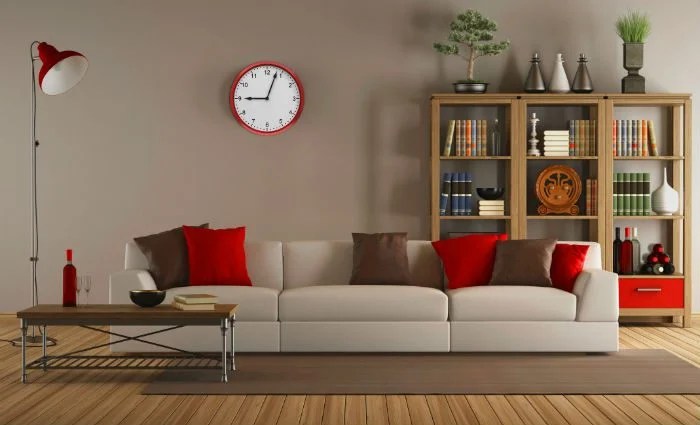Your Home is a Reflection of your Personality: from walls to details

Our homes are more than just the places we live — they are a part of who we are. From the minute you walk in, every color, object, and detail shows off your taste, habits, and personality. Well-planned or evolved, your space has a lot to say.
It doesn’t matter if it’s a small apartment or a spacious house—each corner tells your story. Behind the Scenes: How DSCR loans approve you without income verification—just like these loans rely on what’s working, your home quietly shows your values without explanation. This article is about how your wall colors and things on shelves can create a personal, even emotional, portrait of you. Sometimes, all it takes to see that connection is a new point of view.
Color Psychology: What Your Walls Say About You
And the colors in your home do much more than just decorate — they speak. They set a mood, evoke a feeling, and quietly inform guests what sort of person resides here. Warm hues — somewhere between terracotta and mustard — might indicate someone lively and social, even a little nostalgic. Maybe it’s soft pastels or cool greys that reflect a sense of peace, of order, and of a love for everything to be in its place. If they are painted white, it may not just be about minimalism — it can be a longing for clarity or a profound appreciation of space and light.
It’s not like colors are chosen arbitrarily, either. Even if you didn’t give conscious thought to your palette, your choices are frequently driven by your personality, motivation, or history. A person craving adventure might prefer strong, bright colors, whereas a more-aquarian person might want to wrap themselves in muted earthly shades. And then some mix it all, producing a rainbow patchwork that represents a multilayered personality — someone who doesn’t belong in any one box.
The walls are the ambient music of your life. You might not always see them, but they are always there, establishing the tone. In Poland, where the seasons are extreme and the natural light changes drastically with the time of year, your wall colors can change how your home feels from month to month. Which is why selecting the right colours isn’t simply about keeping up with the trends — it’s about tuning your space to the emotional frequency that is most “you.”
Structure vs. Style
How you outfit and arrange your home speaks volumes about how you pass through the world. Consider your living room: Is the sofa positioned so that you want to sit and chat, or leaned at the perfect angle to the TV? That seemingly small detail can reflect whether you are the sort of person who values connection or solitude, relaxation or entertainment. The arrangement of your environment is a physical portrayal of your priorities. For instance, various lifestyles make different home designs:
- The Host: Open layout, plenty of seating, and seamless flow between the kitchen and living room reflect a love for entertaining and social connection.
- The Remote Worker: A bright corner converted into a compact office with ergonomic furniture shows a focus on productivity and creativity.
- The Minimalist: Prefers essential furniture, clean lines, and open space—valuing calm, clarity, and function over decoration.
- The Maximalist: Fills shelves with books, souvenirs, and art—highlighting a love for stories, exploration, and visual stimulation.
Style of furniture matters, too. A vintage armchair hints at an interest in history or nostalgia, while a sleek, Scandinavian piece leans practical and no-frills. A well-worn dining table might suggest family dinners or late-night conversations with friends. Even how you treat your entranceway can tell a lot about you: a neat, ordered foyer suggests you’re structured and methodical; a more casual, lived-in entrance may reflect a more relaxed and spontaneous mindset.
Ultimately, your design is a language that doesn’t speak. It instructs guests how to behave in your home and instructs you how to live in it. It’s not just about style — it’s about the sound of your flow matching your innards. And that tempo, whether rapid or slow and steady, is all your own.
Textures, Materials, and Mood
The texture of your home —the surfaces you feel beneath your fingers, the materials that surround you — plays a quiet yet significant role in forming its character. You might not be aware of it, but whether it’s a plush velvet cushion cover or a raw wood coffee table, these materials set a mood — they calm us, they make us feel grounded or uplifted, and they give us great energy. To them, we must add the unsaid level: emotional design.
The preference for soft, cozy fabrics like wool, cotton, and linen reflects a need for warmth, comfort, and softness in everyday life. A person who decorates with natural textures might be interested in authenticity and nature. In Poland, this tactile comfort becomes even more important, particularly in the long, dark days of winter. That thick woven blanket or plush rug underfoot isn’t only for looks — it’s about giving people a nest that feels like home.
By contrast, glass, metal, or polished concrete could be indicative of a more modern, clean, and exacting mindset. These are the materials of control, nebulosity, maybe even a passion for structure and efficiency. Somebody more of a fan of smooth, shiny finishes might find the sensation of calm or openness similar.
“Someone who layers textures — the combination of soft and hard, matte and glossy, for example — may be trying to indicate that he or she likes balance and contrast. It evinces a willingness to be cavalier, to break the rules just enough to keep things interesting. And it’s not just touch — these materials impact the acoustics, temperature, and light in your home, subtly shaping how you experience it day to day.
Ultimately, the things that you decide to work with are things that are an extension of your sensory universe. They cloak your routines in feeling, and those feelings reveal more of your personality than you might think.




